The 45 SEO High-Ranking Content Writing Task checklist covers essential steps to optimize your content for better visibility on search engines. It includes tasks like keyword research, crafting engaging meta descriptions, optimizing images with alt text, and ensuring proper internal and external linking. It also focuses on content structure, mobile-friendliness, and user engagement. These steps ensure that your content is both SEO-friendly and valuable to readers, helping improve search rankings and drive more traffic to your website.
| Task | Details |
|---|---|
| 1. Target Keyword Selection | Choose a primary keyword and relevant secondary keywords. |
| 2. Use Focus Keyword in Title | Include the target keyword naturally in the title. |
| 3. Optimize Meta Description | Write a compelling meta description with the focus keyword. |
| 4. Use Keywords in Headings (H1, H2) | Add the primary and secondary keywords in H1, H2, and H3 tags. |
| 5. Create SEO-Friendly URLs | Keep URLs short, clean, and include the primary keyword. |
| 6. Keyword Density | Use the target keyword and related terms naturally throughout the content. |
| 7. Internal Linking | Link to related pages within your site to improve SEO and user experience. |
| 8. External Linking | Link to high-authority, relevant external sources for credibility. |
| 9. Image Optimization | Use alt tags with keywords and ensure images are compressed for faster load times. |
| 10. Mobile Optimization | Ensure the content is mobile-friendly for better user experience. |
| 11. Content Length | Write long-form, in-depth content that covers the topic thoroughly. |
| 12. Use Multimedia | Include images, videos, and infographics to enhance content quality and engagement. |
| 13. Monitor Content Readability | Use short paragraphs, bullet points, and clear language to improve readability. |
| 14. Update Old Content | Refresh outdated content to improve relevance and search performance. |
| 15. Use Structured Data | Implement schema markup for rich results and improved search engine understanding. |
| 16. Engage with Social Media | Share content on social media platforms to drive more traffic and engagement. |
| 17. Optimize for Featured Snippets | Structure content (lists, tables) to appear in Google’s featured snippets. |
| 18. Use a Call to Action (CTA) | Include a clear CTA to guide users to the next step (e.g., subscribe, read more, purchase). |
| 19. Add a Table of Contents | Use a TOC for easy navigation and to enhance user experience. |
| 20. Proofread and Edit | Review content for spelling, grammar, and clarity to ensure professional quality. |
| 21. Ensure Fast Load Time | Compress images, use caching, and improve server response time to reduce page load time. |
| 22. Optimize for Voice Search | Include long-tail and conversational keywords to capture voice search queries. |
| 23. Include Related Keywords | Use LSI (Latent Semantic Indexing) keywords to improve content relevance. |
| 24. Focus on User Intent | Align content with what the user is searching for (informational, transactional, etc.). |
| 25. Use Clear Subheadings | Break up content with descriptive subheadings for easy scanning and improved SEO. |
| 26. Check Competitor Pages | Review top-ranking competitor content to identify opportunities and gaps. |
| 27. Check for Duplicate Content | Avoid duplicate content issues by using unique text and canonical tags where needed. |
| 28. Optimize for Core Web Vitals | Ensure good performance on Google’s Core Web Vitals (LCP, FID, CLS). |
| 29. Add Relevant Tags | Use relevant tags and categories to organize content on your site. |
| 30. Optimize for Local SEO | Include local keywords and optimize content for location-specific searches. |
| 31. Use Short Sentences | Write clear, concise sentences to maintain reader engagement. |
| 32. Check for Broken Links | Regularly check and fix broken internal or external links. |
| 33. Engage with Comments | Encourage and respond to comments for better user interaction and signals to search engines. |
| 34. Use Power Words | Add emotional triggers and power words to improve click-through rates (CTR). |
| 35. Write for Featured Snippets | Structure content to answer common questions that can appear in Google’s featured snippets. |
| 36. Monitor Analytics | Track performance metrics (traffic, bounce rate, CTR) using tools like Google Analytics. |
| 37. Improve Dwell Time | Create engaging, valuable content to keep users on your page longer. |
| 38. Optimize Header Tags | Use H1, H2, H3, etc., effectively to structure content and enhance SEO. |
| 39. Check Page Indexing | Ensure important content is indexed by search engines using Google Search Console. |
| 40. Regularly Audit Content | Perform regular content audits to identify outdated, irrelevant, or underperforming content. |
| 41. Enhance Title Tags | Create compelling title tags with keywords to improve SEO and click-through rates. |
| 42. Use Descriptive Alt Text | Add descriptive alt text to all images to help with accessibility and image search rankings. |
| 43. Test Meta Descriptions | Optimize meta descriptions for readability and to increase CTR. |
| 44. Compress CSS and JavaScript | Minify CSS and JavaScript files to improve load times and performance. |
| 45. Analyze User Behavior | Use heatmaps and behavior tracking tools to understand user interaction on your page. |





